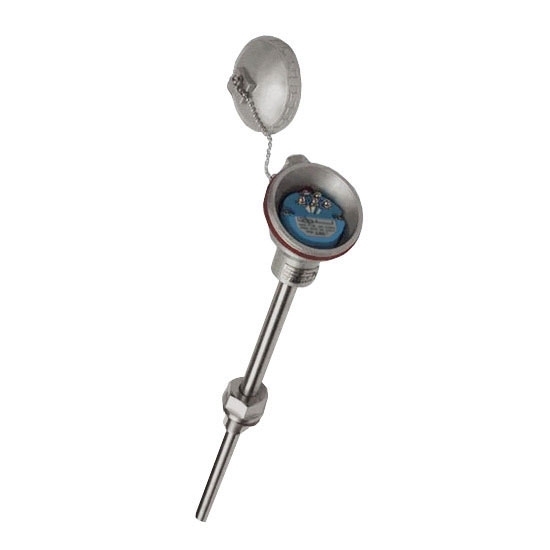
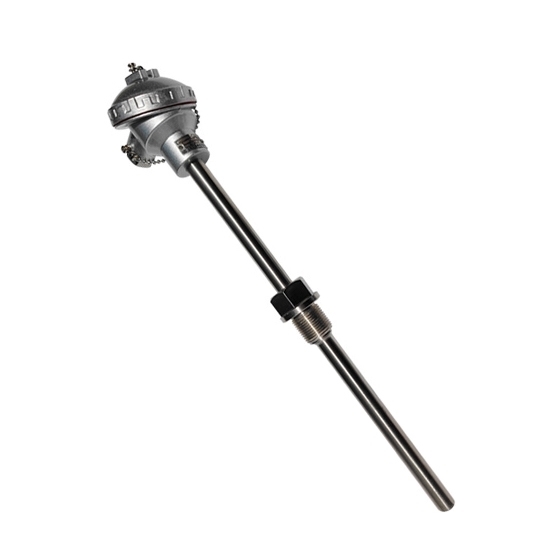
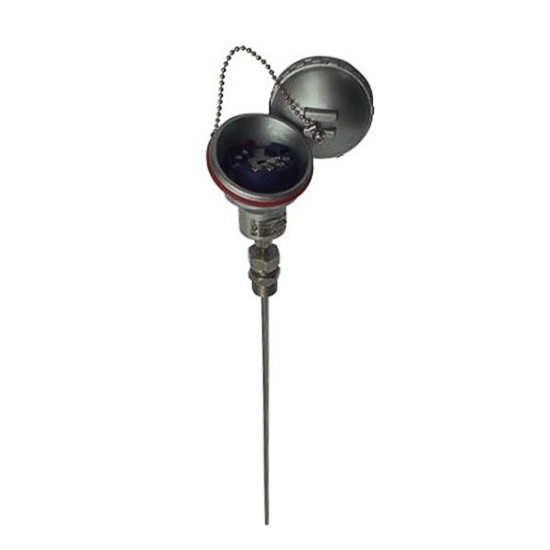
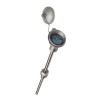
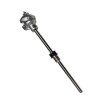
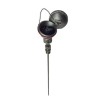
- Stock: In Stock
- Model: RDDLZ-RTD-T2W
- Weight: 1.00
- SKU: RDDLZ-RTD-T2W
Available Options
RTD sensor built-in transmitter can directly provide accurate input signal of temperature changes for display instruments, recording instruments, signal conditioners, scanister and computer.
Specification
1. RTD temperature range and accuracy chart
| Type of sensing element | Measuring range | Allowable deviation Δt |
| Pt100 | -200~420℃ | Class B (-200~800℃) Permissible deviation ±(0.30+0.005|t|) |
| Class A (-200~650℃) Permissible deviation ±(0.15+0.002|t|) | ||
| Cu50 | -100~150℃ | -50~100℃ Permissible deviation ±(0.30+6.0*10-3t) |
Note: t is the actual measuring temperature absolute value of the temperature sensing element.
2. Transmitter parameter chart
| Input | Platinum thermistor: PT100, PT1000 |
| Output | 4-20mA |
| Intrinsic error | ±0.2%, ±0.5% |
| Transmission mode | 2 wire |
| Supply voltage | DC 12~35V, rated voltage DC 24V |
| Load resistance | 0~600Ω (DC 24V), rated load 250Ω |
| Temperature influence | ≤0.05/1℃ |
| Working environment | Temperature: -25~+80℃, humidity: 5%~95%, mechanical vibration: f≤55Hz, amplitude<0.15mm |
| Display | 3 1/2digital display or LCD display |
Feature
- Wide Range of Applications: RTD sensor with transmitter can directly measure the temperature of liquid, steam and gas medium in the range of -200~+420°℃ in various industrial processes, and convert the temperature into a 4-20mA unified output signal proportional to the electrical signal of the thermal resistor. It can be widely used in metallurgy, petroleum, chemical industry, electricity, light industry, textile, food and other fields.
- Anti-interference: The transmitter component of the RTD sensor is miniaturized and can be installed in the junction box of the thermal resistor to become an integrated temperature transmitter. As an integrated temperature transmitter, it directly outputs 4~20mA signals in the industrial field, which improves the anti-interference ability of the signal during long-distance transmission.
- Corrosion Resistance: RTD sensor has high accuracy, low power consumption, wide operating environment temperature range, and stable and reliable operation. Moreover, due to the use of silicone rubber sealing structure, it is shock-resistant and moisture-resistant, and is suitable for use in harsh field environments.
Dimension (Unit: mm)
Selection
| Type of sensing element | Meter type | Installing form | Mode of connection | Thermowell diameter | Thermowell total length |
| T4: Pt100; T6: Pt1000 | P0: No meter; P2: Meter with digital display; P4: Intelligent meter with digital display | I1: No fixed device; I2: Fixed card sets of thread joint; I3: Movable card sets of thread joint; I4: Fixed card sets of flange; I6: Taper thermowell and fixing thread | C3: Standard waterproof protection head; C4: Explosion-proof protection head | D0: Φ16mm; D1: Φ12mm | 225~2150mm |
Note: The sensing element is sheath RTD sensor, thermowell material is stainless steel, and circuit adopts non-isolated type. When ordering products, write the thermowell insertion depth l and the corresponding temperature range for output 4~20mA signal you need.
Application
Tips: Connection methods of Pt100 RTD sensor
Pt100 RTD sensor usually has two-wire and three-wire connection methods. The two-wire connection is to connect a wire to both ends of thermistor. This connection method is simple with low cost. But it will bring additional error as the lead resistance becomes one arm of the bridge. Although with each change of 10 degrees centigrade, PT100 only changes 0.39 ohms. But the lead wire of industrial field thermistor is usually long and the lead resistance will certainly affect the result of the measurement. Therefore, Pt100 of two-wire connection is only suitable for short distance application. It is necessary to use three-wire connection in the application of long distance. The three-wire connection is to lead one line at one end of thermistor and the other two lines are led at another end. When the thermistor matches with the measuring bridge, lead resistance is connected to two arm of the bridge circuit, which eliminates the influence of the lead resistance and improves the measurement accuracy.
